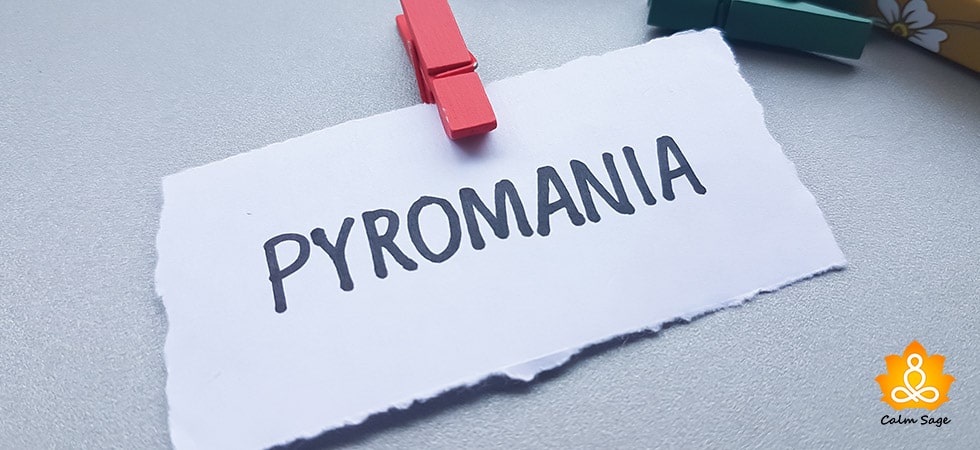All You Need To Know About Pyromania Disorder

Pyromania is an impulse control disorder that is characterized by setting fires intentionally over and over again. Pyromania is a serious mental health illness that makes people unable to stop their compulsive behaviors and as a result, they set fire which helps in releasing their anxiety and provides the pleasure of relief from the symptoms.
Some people often relate this condition with arsonists, however, arson means setting fires for personal gain. The only difference is that pyromaniacs set fires to relieve their anxiety and other symptoms. In this blog, we will understand the term “pyromania” and its related psychology. So, let’s get started!
List of Contents
What is Pyromania?
Pyromania is a rare type of impulse control disorder that is characterized by setting fires intentionally and repeatedly. One of the main facts to remember about pyromaniacs is that they don’t set fires for financial purposes. Additionally, they also don’t want to be engaged in any type of criminal activity, improve their living, or gain revenge.
Moreover, the symptoms are not related to hallucinations or delusions or related to an intellectual disability. The diagnosis process is only made when the behavior is correlated with other mental health issues such as antisocial personality disorder, manic episode, or conduct disorder.
Pyromaniac plans their fire setting in advance. They don’t consider if there will be financial or physical harm, they only focus on gaining pleasure from the destruction caused by setting fires.
Symptoms of Pyromania
According to the Diagnostic and Statistical Manual of Mental Health Disorders 5th Edition (Updated Version) (DSM-5-TR), symptoms of pyromania revolve around impulsive, conductive, and disruptive factors.
The main symptom or feature of pyromania is setting fires intentionally and repeatedly to get relief from other symptoms such as anxiety, compulsion, and more. Below listed are some of the other important symptoms of pyromania:
- An untold or unexplainable fascination towards setting fire (this can include attraction, curiosity, and interest towards fire or fire-setting)
- Exaggerated feelings of stress or arousal before setting a fire
- Experiencing relief, satisfaction, and pleasure after setting fires or after participating in the aftermath
- High reactions to stimuli
- Highly energetic
- Keeping instruments or types of equipment related to fire
- Setting fires deliberately and becoming a firefighter all of a sudden
- Watching fire videos, setting false alarms
Pyromania in Adults and Children
Fire setting can be a major problem in children. However, only a few can meet the diagnosis criteria. Research shows that there is no specific age for the development of pyromania.
However, it can also be identified or diagnosed during childhood, and in such cases pyromania can also be cured. Fire-setting symptoms or behaviors might not be persistent in children and adults which means symptoms may get better over time. Pyromania in adolescents can also be related to adjustment disorder, ADHD, or conduct disorder.
Differences between Pyromaniacs and Arsonists
Below listed are some of the noticeable differences between pyromania and arson:
| Arson | Pyromania |
|---|---|
| Being an arsonist is considered under criminal activities. | Pyromania is caused by emotions or the urge to set fires to gain pleasure. They keep on setting fires through lighters, they may burn holes, furniture, or rugs to gain pleasure. |
| An arsonist sets fires to gain revenge or for monetary benefits. | Pyromaniacs don’t have a desire to harm anyone, they don’t set fires for monetary gain, and they usually set fires for personal pleasure or to gain relief from symptoms. |
| An arsonist doesn’t require a psychiatric diagnosis. | Pyromania requires a psychiatric diagnosis. |
| Arsonists generally do not struggle with mental health issues. | Setting fires intentionally can be the only aspect important for the diagnosis of pyromania. |
Causes and Risk Factors of Pyromania
Research shows that the development of pyromania may be related to multiple causes, such as heredity link, history of mental health issues, brain chemistry changes, environmental issues, and others. According to the research, people struggle with serious mental health illnesses such as gambling disorder, antisocial personality disorder, bipolar disorder, conduct disorder, and mania.
Additionally, the prevalence of pyromania also shows that pyromania is likely to affect people who were physically or sexually abused or abandoned during childhood or adolescent years. Moreover, people having a history of crime might also display a fire-setting tendency.
Pyromania is more prevalent in males as compared to females. Additionally, symptoms of pyromania usually begin in early adulthood or adolescence. Below listed are some of the risk factors associated with the development of pyromania:
- Learning disability
- Male group
- Poor social skills
- Presence of other mental health issues such as substance use disorder.
- Young adults or teens
Diagnosis and Treatment of Pyromania
If you think you or your loved one might be struggling with pyromania, the first ever step is to seek immediate treatment to avoid property damage, injury, and other physical or financial damages. Immediately connect with a physical or mental health provider nearby for proper diagnosis and treatment. The diagnostic criteria for pyromania include:
- The symptoms must be present for a long time
- The symptoms must be frequent
- Symptoms must occur in different situations causing significant problems
Coming forth to the treatment process of pyromania, cognitive behavioral therapy (CBT) is the frontline treatment option for treating pyromania. Additionally, pyromania in adults or children can be effectively treated with the help of family therapy.
There is no specific medication for treating pyromania however, doctors or psychologists may prescribe medications for treating specific symptoms such as SSRIs, atypical antipsychotics, anti-androgens, and others. Other treatment options for pyromania include:
- Behavioral therapy
- Individual therapy
- Multisystemic therapy
- Parent management training
I hope this blog helps you understand what pyromania is, its symptoms, causes, treatment, and more. For more such content, connect with us through all social media platforms.
Thanks for reading!




















